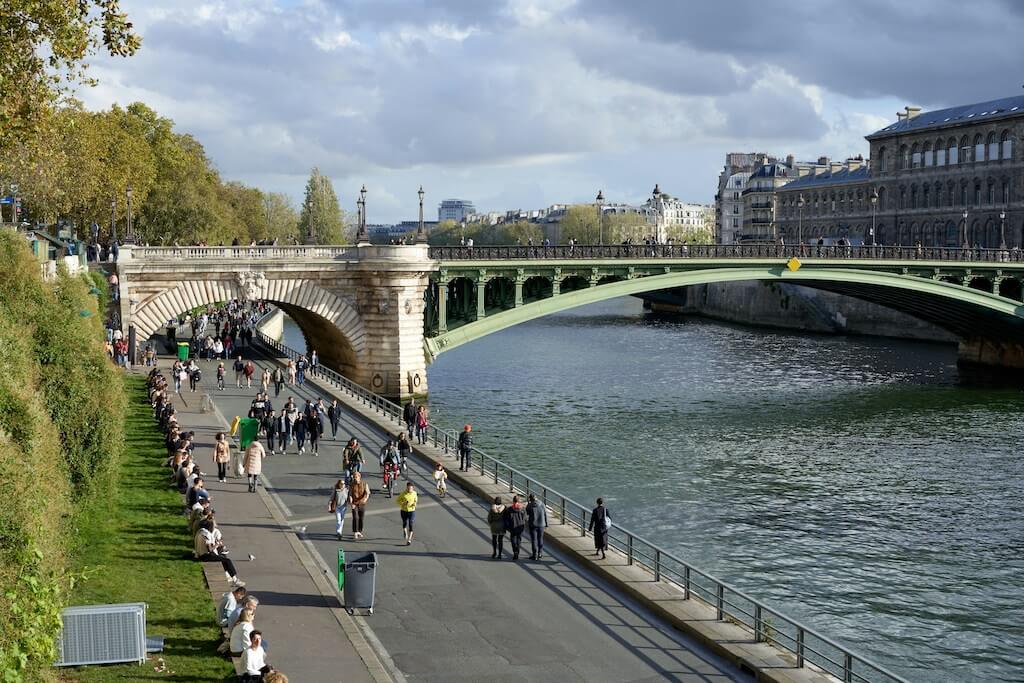Autumn Gear Guide
Find inspiration in our Gear Guide that will keep you out on your bike through wind or rain.
Download NowStarting Nov. 5, Paris will implement a Limited Traffic Zone (ZTL) in the city center, a measure designed to enhance mobility and improve air quality, not to mention give more space to cyclists and pedestrians. This initiative follows in the footsteps of other major European cities focusing on reducing vehicular congestion while promoting public transport […]
Starting Nov. 5, Paris will implement a Limited Traffic Zone (ZTL) in the city center, a measure designed to enhance mobility and improve air quality, not to mention give more space to cyclists and pedestrians. This initiative follows in the footsteps of other major European cities focusing on reducing vehicular congestion while promoting public transport and active mobility.
Paris first experimented with ZTLs during the recent Summer Olympics.
The ZTL will restrict traffic within the 1st, 2nd, 3rd, and 4th arrondissements, excluding certain areas such as the Grands Boulevards and the Cité and Saint-Louis islands. The zone covers approximately 131 kilometers of roads that currently experience between 350,000 to 550,000 vehicle movements each day. Motorized vehicles, including cars, commercial trucks, and scooters, will no longer be allowed to transit through the area without specific permits.
For cyclists, this means more space to ride freely, as bicycles and other non-motorized vehicles are exempt from the restrictions. Cyclists can navigate the city center without the fear of encountering heavy traffic, making the streets safer and more accessible for all.
The ZTL will permit only local traffic, allowing access to residents, workers, delivery personnel, and visitors with legitimate reasons for entering the area. Individuals heading to medical appointments, shops, or social gatherings will still be able to drive in, as will taxis and certain service vehicles, including those transporting people with disabilities.
To assist residents and businesses during this transition, an educational phase will precede enforcement, allowing drivers to familiarize themselves with the new regulations. Compliance will not be strictly monitored until 2025, when penalties for violations will be introduced.

Paris cycling city along the Seine River
As Paris strives to become a more bike-friendly city, the ZTL is a crucial step towards reducing reliance on motor vehicles and promoting healthier modes of transport. The initiative aligns with broader efforts to create a more sustainable urban environment by encouraging residents and visitors to walk, bike, or use public transportation instead of driving.
“This measure aims to massively reduce motor vehicle traffic and provide increasingly more space for pedestrians, public transport and cyclists. It reduces air pollution and noise,” said Paris Mayor Anne Hidalgo, via social media on Nov. 4. “An educational phase will be put in place in the coming weeks to accompany motorists and ensure a good understanding of the new traffic rules. For the past ten years, road traffic and air pollution have already dropped by 40% in Paris.”
With the introduction of the ZTL, navigation apps are expected to update their systems to help users avoid restricted areas effectively. The city plans to roll out notifications for drivers planning to enter the zone, ensuring a smoother transition to the new traffic regulations.
As Paris sets an example for urban mobility, the ZTL promises to enhance the cycling experience in the heart of the city. With less traffic and improved air quality, cyclists and pedestrians can enjoy the beauty of Paris like never before.
For more information on the Limited Traffic Zone and its impact on urban cycling, stay tuned as the city prepares for this significant change in its transportation landscape.
Find inspiration in our Gear Guide that will keep you out on your bike through wind or rain.
Download Now
Leave a comment